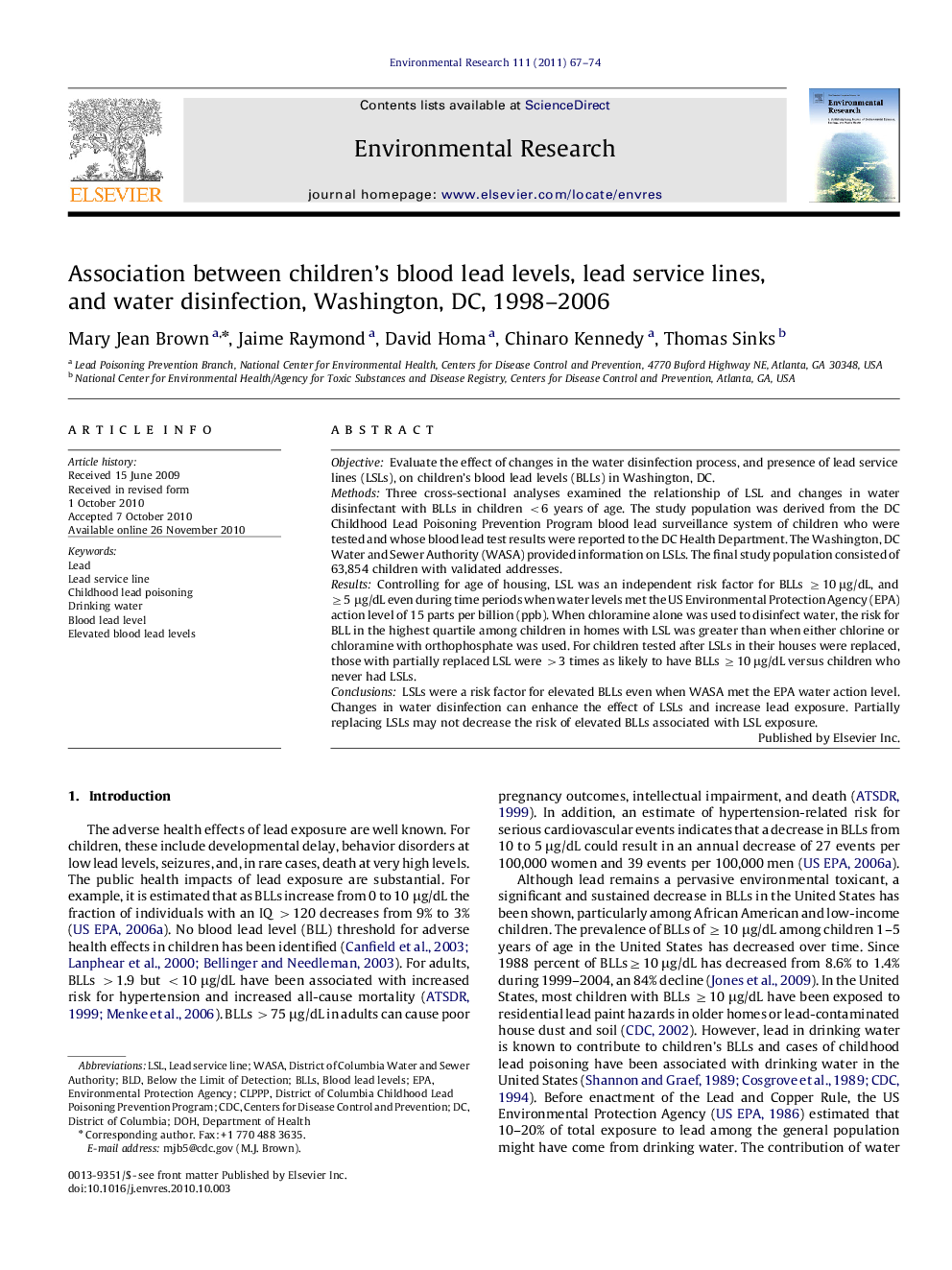| Article ID | Journal | Published Year | Pages | File Type |
|---|---|---|---|---|
| 4470010 | Environmental Research | 2011 | 8 Pages |
ObjectiveEvaluate the effect of changes in the water disinfection process, and presence of lead service lines (LSLs), on children’s blood lead levels (BLLs) in Washington, DC.MethodsThree cross-sectional analyses examined the relationship of LSL and changes in water disinfectant with BLLs in children <6 years of age. The study population was derived from the DC Childhood Lead Poisoning Prevention Program blood lead surveillance system of children who were tested and whose blood lead test results were reported to the DC Health Department. The Washington, DC Water and Sewer Authority (WASA) provided information on LSLs. The final study population consisted of 63,854 children with validated addresses.ResultsControlling for age of housing, LSL was an independent risk factor for BLLs ≥10 μg/dL, and ≥5 μg/dL even during time periods when water levels met the US Environmental Protection Agency (EPA) action level of 15 parts per billion (ppb). When chloramine alone was used to disinfect water, the risk for BLL in the highest quartile among children in homes with LSL was greater than when either chlorine or chloramine with orthophosphate was used. For children tested after LSLs in their houses were replaced, those with partially replaced LSL were >3 times as likely to have BLLs ≥10 μg/dL versus children who never had LSLs.ConclusionsLSLs were a risk factor for elevated BLLs even when WASA met the EPA water action level. Changes in water disinfection can enhance the effect of LSLs and increase lead exposure. Partially replacing LSLs may not decrease the risk of elevated BLLs associated with LSL exposure.
Research highlights► In Washington, DC, between November 2000 and December 2006, children living in homes with an LSL were at increased risk of having higher BLLs than children living in homes without an LSL. ► This association was strongest during 2003 when chloramine alone was used for water disinfection. ► The association persisted after controlling for the age of housing. ► Partial replacement of LSLs did not result in a decrease in the association between LSL and elevated BLL.
